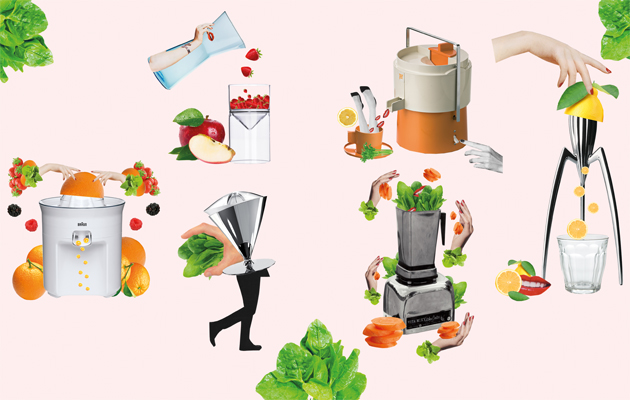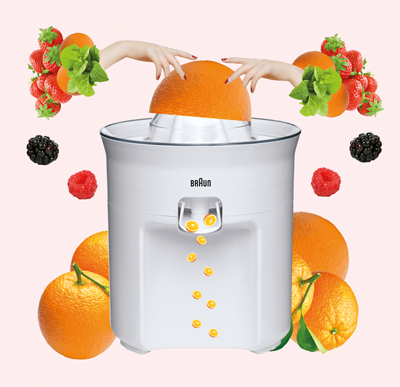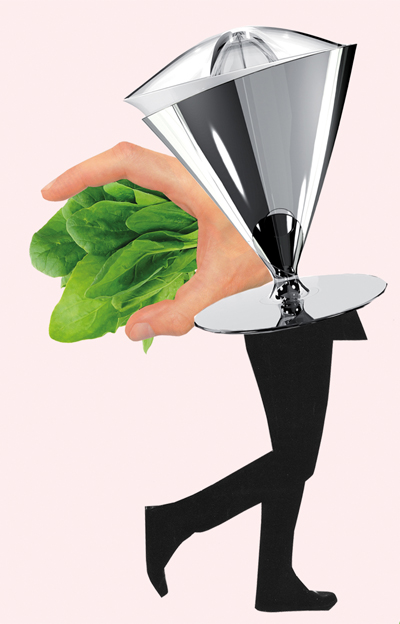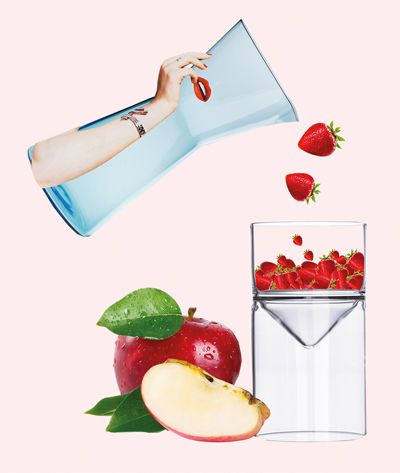|
|
||
|
By no means a new fad, juice has played a significant role in 20th-century design. Laura Snoad traces its cultural history, from infomercials to the iPad
“The surfaces were without apology … bold and effortless. You knew exactly what it was and how to use it,” says Apple’s Jonathan Ive, not of his own products but of this 1972 Braun MPZ 2 Citromatic. I’ve first bonded with Steve Jobs over Dieter Rams’s work at Braun – the rest is history.
Innocenzo Rifino and Lorenzo Ruggieri designed the hinged body of the motorised Vita juicer for Bugatti in 2010, inspired by the action of manually juicing and pouring. Touch was even key to its motorisation – which is only activated by pushing citrus halves into its reamer.
Designed in 1958 by Kaj Franck, Iittala’s Kartio range brought coloured glass to the masses, and is still one of the brand’s best-selling lines. Also much-copied, Sebastian Bergne’s Reversible glasses were developed while he was studying at the RCA – his first experiment in a career of glass innovation.
The iconic orange handles of Fiskars scissors – the world’s first plastic-handled variety – owe their existence to this blender. Originally intended to be black, the scissor prototypes were made using plastic colour left over from the juicers. The hue was even trademarked in 2003.
In 1949, Vitamix founder William G “Papa” Barnard spawned the health-juice craze by creating the first ever American TV infomercial to demonstrate how this Vitamix Kitchen Center blender could help families eat more healthily, including top tips on how to make spinach-based laxative drinks.
“My juicer is not meant to squeeze lemons; it is meant to start conversations,” said Philippe Starck of his Juicy Salif for Alessi. Starck sent initial sketches to Alberto Alessi on the back of a napkin – no doubt a shock as he’d commissioned Starck for a tray. |
Words Laura Snoad
Illustrations Luca Mainini |
|

























